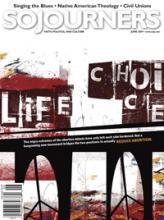Commentators have frequently compared the credit crisis of today with the economic crisis of 1929, just before the Great Depression. Yet almost no one speaks about the deeper causes of the economic crisis: the eagerness of banks to give, year after year, huge amounts of credit to speculators and all kinds of speculative funds, with an enormous worldwide growth of financial markets and new financial products as an unavoidable consequence.
In recent years there has been a staggering increase in the amount of money being invested by investors worldwide—and most of it has been put in highly speculative markets in the financial, rather than the “real,” economy. What does this distinction mean? To oversimplify, the “real economy” is the part of the economy that involves making, selling, and buying goods and services, from groceries to shoes to doctors’ visits to garbage collection. The financial sector, in contrast, involves the buying and selling of money as a product in its own right.
On its simplest level, this involves the trade in loans or bonds (someone borrows money and pays back more money in the future), the buying and selling of foreign currencies, and the buying and selling of shares in the stock market.
Read the Full Article

